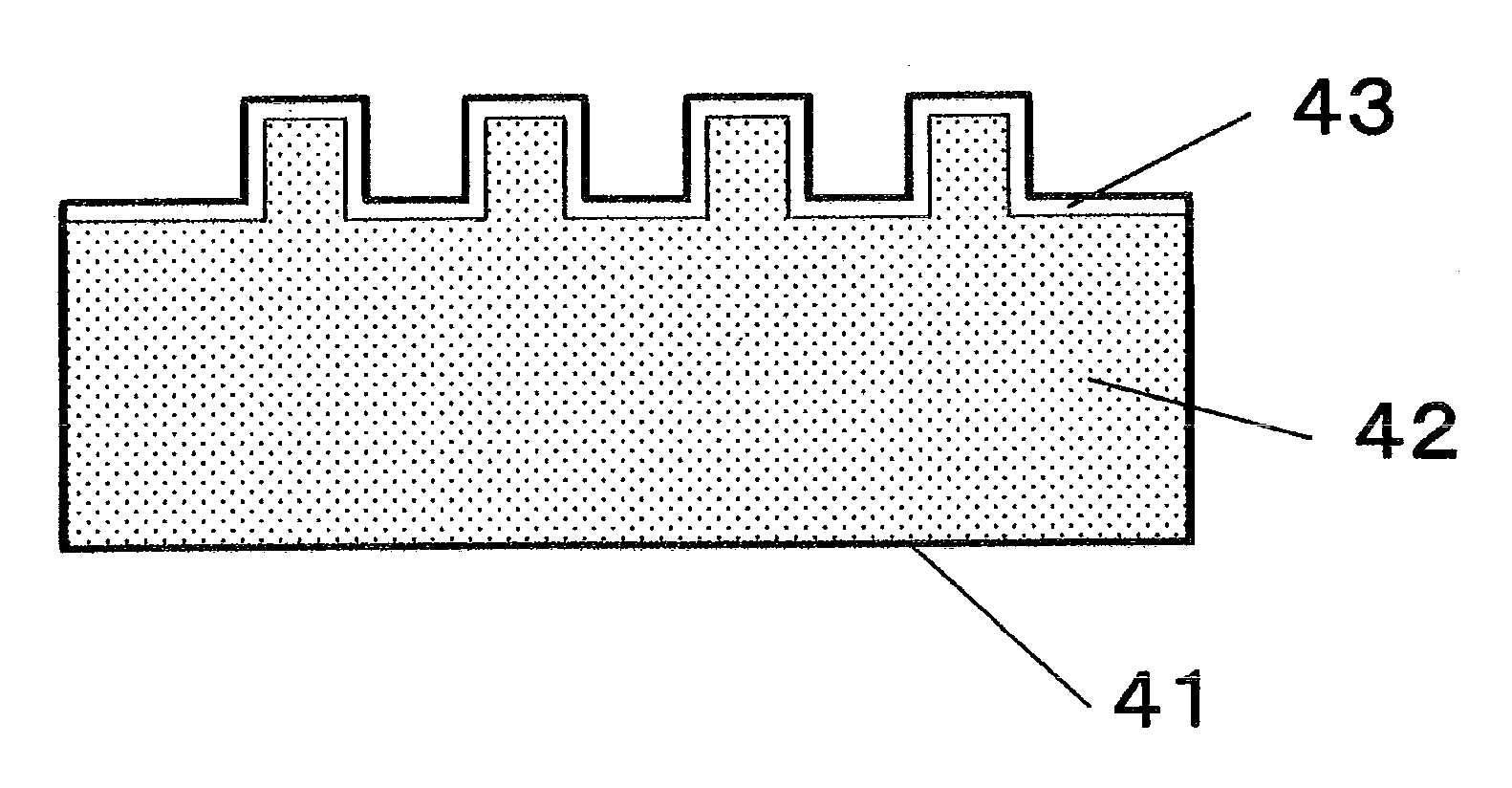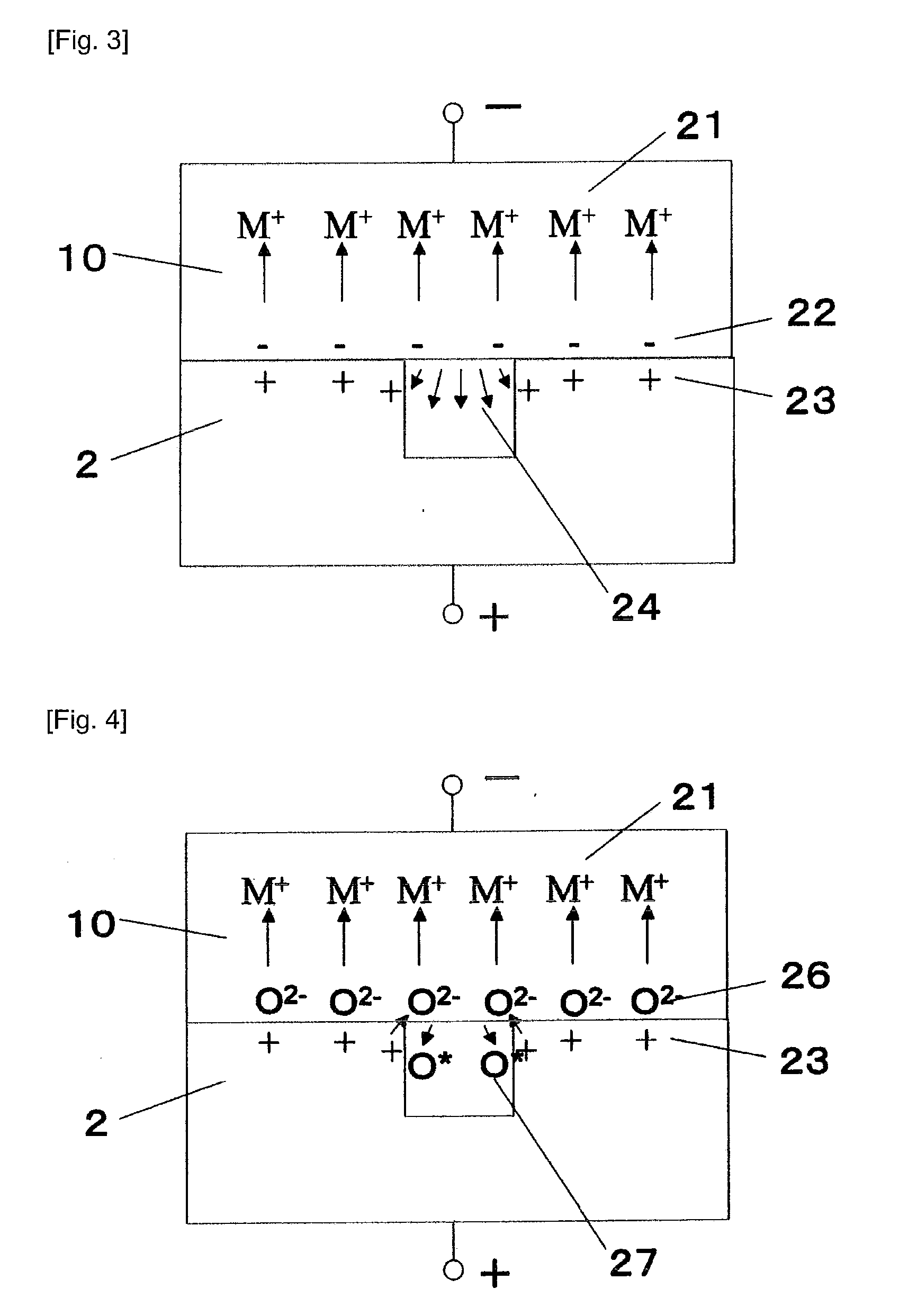Method of molding glass parts, molding apparatus, and molded product of glass material
a technology of glass material and molding apparatus, which is applied in the field of molding glass parts, molding apparatus, and molded product of glass material, can solve the problems of high molding area, low processing efficiency of glass material processing using semiconductor processes such as dry-etching, and large increase in pressure means
- Summary
- Abstract
- Description
- Claims
- Application Information
AI Technical Summary
Benefits of technology
Problems solved by technology
Method used
Image
Examples
example 1
[0127]For the molding, crown glass containing potassium (0200 glass produced by MATSUNAMI GLASS IND., LTD.) was used as the glass material, and a quartz substrate having a fine line-and-space pattern formed thereon was used as the molding die. On the surface of the die, a platinum layer having a thickness of 20 nm was formed. A glass transition temperature of the crown glass was 533° C. The above-mentioned components were placed in the molding apparatus having the configuration illustrated in FIG. 7. Then, the chamber was evacuated to a vacuum. Subsequently, the glass material and the molding die were heated to 440° C. while being kept in contact with each other. A voltage at 1 kV was applied in the state that the glass side was the negative electrode and the molding die side was the positive electrode to be kept for ten minutes. No load was applied at the time of molding. It was confirmed that a profile of the die was replicated to the surface of the glass after the molding, as ill...
example 2
[0128]With use of the crown glass and the molding die made of quartz, on which the platinum film was formed, the molding was performed by applying the voltage at the time of molding, while the applied pressure at 0.5 MPa was applied for ten minutes. The conditions other than the application of the pressure were the same as those of Example 1. As a result of the application of the pressure, molding ability was improved. As the deformation of the glass material, 0.2 μm was obtained.
example 3
[0135]The molding was performed at 440° C. and 500° C. using pyrex glass (pyrex: registered trademark) manufactured by Asahi Techno Glass Co., Ltd. as the glass material. The conditions other than the temperatures at the time of molding were the same as those of Example 1. Though the deformation was about 0.01 μm at 440° C., the deformation of 0.2 μm was obtained by the molding at 500° C. Though the pyrex glass having a high softening temperature requires a high temperature for the molding, the effects of the application of the voltage are the same as those of Example 1.
PUM
| Property | Measurement | Unit |
|---|---|---|
| Temperature | aaaaa | aaaaa |
| Fraction | aaaaa | aaaaa |
| Fraction | aaaaa | aaaaa |
Abstract
Description
Claims
Application Information
 Login to View More
Login to View More - R&D
- Intellectual Property
- Life Sciences
- Materials
- Tech Scout
- Unparalleled Data Quality
- Higher Quality Content
- 60% Fewer Hallucinations
Browse by: Latest US Patents, China's latest patents, Technical Efficacy Thesaurus, Application Domain, Technology Topic, Popular Technical Reports.
© 2025 PatSnap. All rights reserved.Legal|Privacy policy|Modern Slavery Act Transparency Statement|Sitemap|About US| Contact US: help@patsnap.com



